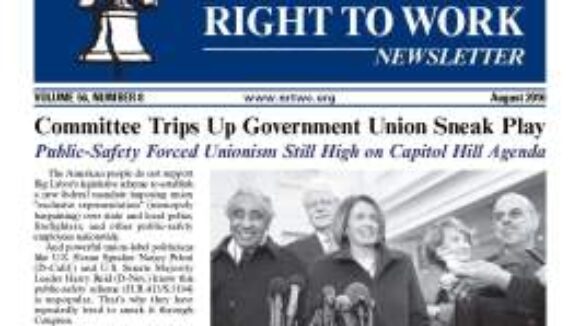Forced Unionism vs. Private Health Insurance
Between 1999 and 2009, the number of people with job-based private health insurance grew by 570,000 in Right to Work states, but declined by 7.74 million in forced-unionism states. Big Labor can't explain why. Image Credit: sph.umd.edu
(Source: October 2010 NRTWC Newsletter)
Big Labor Bastions See Steep Decline in Job-Based Benefits
On average, residents of Right to Work states have higher real, spendable incomes than their counterparts in non-Right to Work states. And Right to Work states have a much better track record of creating and sustaining private-sector jobs that come with health benefits.
The evidence confirming these two points comes from the U.S. Commerce Department's Bureau of Economic Analysis (BEA) and Bureau of the Census (BOC), as well as the nonpartisan Missouri Economic Research and Information Center (MERIC).
Last month, the National Right to Work Committee's research affiliate, the National Institute for Labor Relations Research, conducted an analysis of the BEA-reported 2009 disposable (after-tax) income data for each of the 50 states.
The Institute adjusted the data to account for interstate differences in living costs with the help of a quarterly index created and reported by MERIC.
The analysis found that, in 2009, the cost of living-adjusted disposable income per capita for the 22 Right to Work states was $35,543.
Productive, Well-Compensated Jobs Disappearing in Forced-Unionism States


